A Review of Distributed Energy Systems: Technologies, Classification, and Applications
Abstract
1. Introduction
- The application of different renewable energy technologies in DESs and their methods and research analysis;
- DES applications at different scale levels;
- DES challenges and their potential solutions.
2. Research on Distributed Energy Systems
2.1. System Optimization
2.1.1. System Design Optimization
2.1.2. System Operational Optimization
- Local energy market
- Microgrids and community energy management
- Smart grid and control strategy
- Flexibility management and risk optimization
2.1.3. System Integration Optimization
- Energy sharing and management model
- Energy planning and dispatching
- Control method and optimization model
2.2. System Performance Evaluation
2.3. Multi-Energy Complementary Energy System
2.4. The Effect of Parameters on DESs
2.4.1. Economy
2.4.2. Technology
3. DES Applications
Information Regarding the Application of DESs in China
4. Discussion and Prospects
4.1. The DES Develops in the Direction of Intelligence and Integration
- Smart grid and demand response
- Energy Internet and distributed collaboration
- Energy storage technology breakthrough and cost reduction
- Microgrid of distributed energy systems
4.2. Growth and Diversification of Distributed Energy Markets
- The scale of the distributed generation market
- Energy as a service
- Driving carbon markets and green finance
4.3. Challenges and Solutions
- Intermittency and instability of renewable energy
- Technical standards and interoperability issues
- Social cognition and user engagement
5. Conclusions
Author Contributions
Funding
Institutional Review Board Statement
Informed Consent Statement
Data Availability Statement
Conflicts of Interest
References
- Al-Qawasmi, J.; Asif, M.; El Fattah, A.A.; Babsail, M.O. Water Efficiency and Management in Sustainable Building Rating Systems: Examining Variation in Criteria Usage. Sustainability 2019, 11, 2416. [Google Scholar] [CrossRef]
- Dudley, B. BP Statistical Review of World Energy; British Petroleum Company: London, UK, 2024. [Google Scholar]
- Xu, X.; Hu, S.; Shao, H.; Shi, P.; Li, R.; Li, D. A spatio-temporal forecasting model using optimally weighted graph convolutional network and gated recurrent unit for wind speed of different sites distributed in an offshore wind farm. Energy 2023, 284, 128565. [Google Scholar] [CrossRef]
- Yang, M.; Guo, Y.; Huang, Y. Wind power ultra-short-term prediction method based on NWP wind speed correction and double clustering division of transitional weather process. Energy 2023, 282, 128947. [Google Scholar] [CrossRef]
- Zhou, Z.; Liu, P.; Li, Z.; Ni, W. An engineering approach to the optimal design of distributed energy systems in China. Appl. Therm. Eng. 2013, 53, 387–396. [Google Scholar] [CrossRef]
- Nadeem, T.B.; Siddiqui, M.; Khalid, M.; Asif, M. Distributed energy systems: A review of classification, technologies, applications, and policies. Energy Strategy Rev. 2023, 48, 101096. [Google Scholar] [CrossRef]
- López González, D.M.; Garcia Rendon, J. Opportunities and challenges of mainstreaming distributed energy resources towards the transition to more efficient and resilient energy markets. Renew. Sustain. Energy Rev. 2022, 157, 112018. [Google Scholar] [CrossRef]
- Katyara, S.; Staszewski, L.; Leonowicz, Z. Protection Coordination of Properly Sized and Placed Distributed Generations–Methods, Applications and Future Scope. Energies 2018, 11, 2672. [Google Scholar] [CrossRef]
- Thopil, M.S.; Bansal, R.C.; Zhang, L.; Sharma, G. A review of grid connected distributed generation using renewable energy sources in South Africa. Energy Strategy Rev. 2018, 21, 88–97. [Google Scholar] [CrossRef]
- Jia, H.; Chong, A. eplusr: A framework for integrating building energy simulation and data-driven analytics. Energy Build. 2021, 237, 110757. [Google Scholar] [CrossRef]
- Zakeri, B.; Syri, S. Electrical energy storage systems: A comparative life cycle cost analysis. Renew. Sustain. Energy Rev. 2015, 42, 569–596. [Google Scholar] [CrossRef]
- Liu, X.; Gao, B.; Zhu, Z.; Tang, Y. Non-cooperative and cooperative optimisation of battery energy storage system for energy management in multi-microgrid. IET Gener. Transm. Distrib. 2018, 12, 2369–2377. [Google Scholar] [CrossRef]
- Zhang, C.; Wu, J.; Zhou, Y.; Cheng, M.; Long, C. Peer-to-Peer energy trading in a Microgrid. Appl. Energy 2018, 220, 1–12. [Google Scholar] [CrossRef]
- Fu, X.; Wu, X.; Zhang, C.; Fan, S.; Liu, N. Planning of distributed renewable energy systems under uncertainty based on statistical machine learning. Prot. Control Mod. Power Syst. 2022, 7, 41. [Google Scholar] [CrossRef]
- Yan, X.; Song, M.; Cao, J.; Gao, C.; Jing, X.; Xia, S.; Ban, M. Peer-to-Peer transactive energy trading of multiple microgrids considering renewable energy uncertainty. Int. J. Electr. Power Energy Syst. 2023, 152, 109235. [Google Scholar] [CrossRef]
- Brown, A.D.; Jeong, J.; Byeon, J.; Na, J. Consumer-Oriented Distributed Energy Policy for Korea: Based on a Case Study of Victoria, Australia. Int. Area Stud. Rev. 2024, 26, 23–54. [Google Scholar] [CrossRef]
- Moura, R.; Brito, M.C. Prosumer aggregation policies, country experience and business models. Energy Policy 2019, 132, 820–830. [Google Scholar] [CrossRef]
- Angizeh, F.; Ghofrani, A.; Zaidan, E.; Jafari, M.A. Adaptable scheduling of smart building communities with thermal mapping and demand flexibility. Appl. Energy 2022, 310, 118445. [Google Scholar] [CrossRef]
- Akhtar, I.; Altamimi, A.; Khan, Z.A.; Alojaiman, B.; Alghassab, M.; Kirmani, S. Reliability Analysis and Economic Prospect of Wind Energy Sources Incorporated Microgrid System for Smart Buildings Environment. IEEE Access 2023, 11, 62013–62027. [Google Scholar] [CrossRef]
- Alves, M.; Segurado, R.; Costa, M. On the road to 100% renewable energy systems in isolated islands. Energy 2020, 198, 117321. [Google Scholar] [CrossRef]
- Ren, F.; Lin, X.; Ma, X.; Wei, Z.; Wang, R.; Zhai, X. A two-stage planning method for design and dispatch of distributed energy networks considering multiple energy trading. Sustain. Cities Soc. 2023, 96, 104666. [Google Scholar] [CrossRef]
- Borodinecs, A.; Zajecs, D.; Lebedeva, K.; Bogdanovics, R. Mobile Off-Grid Energy Generation Unit for Temporary Energy Supply. Appl. Sci. 2022, 12, 673. [Google Scholar] [CrossRef]
- Huang, C.; Yan, Y.; Madonski, R.; Zhang, Q.; Deng, H. Improving operation strategies for solar-based distributed energy systems: Matching system design with operation. Energy 2023, 276, 127610. [Google Scholar] [CrossRef]
- Goebel, C.; Jacobsen, H.-A. Bringing Distributed Energy Storage to Market. IEEE Trans. Power Syst. 2016, 31, 173–186. [Google Scholar] [CrossRef]
- Liu, X.; Ji, Z.; Sun, W.; He, Q. Robust game-theoretic optimization for energy management in community-based energy system. Electr. Power Syst. Res. 2023, 214, 108939. [Google Scholar] [CrossRef]
- Li, G.; Cui, J.; Liu, T.; Zheng, Y.; Hao, C.; Hao, X.; Xue, C. Triboelectric-Electromagnetic Hybrid Wind-Energy Harvester with a Low Startup Wind Speed in Urban Self-Powered Sensing. Micromachines 2023, 14, 298. [Google Scholar] [CrossRef]
- Montesdeoca-Martínez, F.; Velázquez-Medina, S. Integration of a Geothermal Plant in a System with High Renewable Energy Penetration for Desalination Plant Self-Consumption. J. Mar. Sci. Eng. 2023, 11, 353. [Google Scholar] [CrossRef]
- Lu, Z.; Zhu, Q.; Zhang, W.; Lin, H. Economic operation strategy of integrated hydrogen energy system considering the uncertainty of PV power output. Energy Rep. 2023, 9, 463–471. [Google Scholar] [CrossRef]
- Liu, Z.; Li, Y.; Fan, G.; Wu, D.; Guo, J.; Jin, G.; Zhang, S.; Yang, X. Co-optimization of a novel distributed energy system integrated with hybrid energy storage in different nearly zero energy community scenarios. Energy 2022, 247, 123553. [Google Scholar] [CrossRef]
- Zhang, L.; Hu, T.; Zhang, L.; Yang, Z.; McLoone, S.; Menhas, M.I.; Guo, Y. A novel dynamic opposite learning enhanced Jaya optimization method for high efficiency plate–fin heat exchanger design optimization. Eng. Appl. Artif. Intell. 2023, 119, 105778. [Google Scholar] [CrossRef]
- Ding, Y.; Wang, Q.; Tian, Z.; Lyu, Y.; Li, F.; Yan, Z.; Xia, X. A graph-theory-based dynamic programming planning method for distributed energy system planning: Campus area as a case study. Appl. Energy 2023, 329, 120258. [Google Scholar] [CrossRef]
- Specht, J.M.; Madlener, R. Quantifying value pools for distributed flexible energy assets. Energy 2023, 263, 125626. [Google Scholar] [CrossRef]
- Yap, K.Y.; Chin, H.H.; Klemeš, J.J. Blockchain technology for distributed generation: A review of current development, challenges and future prospect. Renew. Sustain. Energy Rev. 2023, 175, 113170. [Google Scholar] [CrossRef]
- Wang, Z.; Zhao, Y.; Zhang, C.; Ma, P.; Liu, X. A general multi agent-based distributed framework for optimal control of building HVAC systems. J. Build. Eng. 2022, 52, 104498. [Google Scholar] [CrossRef]
- Zhang, Y.; Zhu, N.; Zhao, X.; Luo, Z.; Hu, P.; Lei, F. Energy performance and enviroeconomic analysis of a novel PV-MCHP-TEG system. Energy 2023, 274, 127342. [Google Scholar] [CrossRef]
- Yang, M.; Guo, Y.; Huang, T.; Zhang, W. Power prediction considering NWP wind speed error tolerability: A strategy to improve the accuracy of short-term wind power prediction under wind speed offset scenarios. Appl. Energy 2024, 377, 124720. [Google Scholar] [CrossRef]
- Yang, M.; Huang, Y.; Xu, C.; Liu, C.; Dai, B. Review of several key processes in wind power forecasting: Mathematical formulations, scientific problems, and logical relations. Appl. Energy 2024, 377, 124361. [Google Scholar] [CrossRef]
- Yang, M.; Guo, Y.; Wang, B.; Wang, Z.; Chai, R. A day-ahead wind speed correction method: Enhancing wind speed forecasting accuracy using a strategy combining dynamic feature weighting with multi-source information and dynamic matching with improved similarity function. Expert Syst. Appl. 2024, 263, 125724. [Google Scholar] [CrossRef]
- Shao, G.; Zhang, Y.; Wu, H.; Wei, Q.; Wu, Q. Capacity planning of household photovoltaic and energy storage systems based on distributed phase change heat storage. J. Phys. Conf. Ser. 2024, 2782, 012007. [Google Scholar] [CrossRef]
- Yang, M.; Zhang, Y.; Liu, J.; Yin, S.; Chen, X.; She, L.; Fu, Z.; Liu, H. Distributed Shared Energy Storage Double-Layer Optimal Configuration for Source-Grid Co-Optimization. Processes 2023, 11, 2194. [Google Scholar] [CrossRef]
- Li, J.; Xiao, Y.; Lu, S. Optimal configuration of multi microgrid electric hydrogen hybrid energy storage capacity based on distributed robustness. J. Energy Storage 2024, 76, 109762. [Google Scholar] [CrossRef]
- Rao, Y.; Cui, X.; Zou, X.; Ying, L.; Tong, P.; Li, J. Research on Distributed Energy Storage Planning-Scheduling Strategy of Regional Power Grid Considering Demand Response. Sustainability 2023, 15, 14540. [Google Scholar] [CrossRef]
- Zhang, Z.; Ye, L.; Qin, H.; Liu, Y.; Wang, C.; Yu, X.; Yin, X.; Li, J. Wind speed prediction method using Shared Weight Long Short-Term Memory Network and Gaussian Process Regression. Appl. Energy 2019, 247, 270–284. [Google Scholar] [CrossRef]
- Ahmadi, A.; Talaei, M.; Sadipour, M.; Amani, A.M.; Jalili, M. Deep Federated Learning-Based Privacy-Preserving Wind Power Forecasting. IEEE Access 2023, 11, 39521–39530. [Google Scholar] [CrossRef]
- Blasi, T.M.; Fernandes, T.S.P.; Aoki, A.R.; Tabarro, F.H. Multiperiod Optimum Power Flow for Optimization of an Active Distribution Network with Battery Energy Storage Systems. Braz. Arch. Biol. Technol. 2022, 65, e22210757. [Google Scholar] [CrossRef]
- Ge, S.; Li, J.; He, X.; Liu, H. Joint energy market design for local integrated energy system service procurement considering demand flexibility. Appl. Energy 2021, 297, 117060. [Google Scholar] [CrossRef]
- Zhang, S.; Hu, W.; Du, J.; Bai, C.; Liu, W.; Chen, Z. Low-carbon optimal operation of distributed energy systems in the context of electricity supply restriction and carbon tax policy: A fully decentralized energy dispatch strategy. J. Clean. Prod. 2023, 396, 136511. [Google Scholar] [CrossRef]
- Khorasany, M.; Azuatalam, D.; Glasgow, R.; Liebman, A.; Razzaghi, R. Transactive Energy Market for Energy Management in Microgrids: The Monash Microgrid Case Study. Energies 2020, 13, 2010. [Google Scholar] [CrossRef]
- Zhang, Y.; Gatsis, N.; Giannakis, G.B. Robust Energy Management for Microgrids With High-Penetration Renewables. IEEE Trans. Sustain. Energy 2013, 4, 944–953. [Google Scholar] [CrossRef]
- Tao, Y.; Qiu, J.; Lai, S.; Sun, X.; Zhao, J. Market-Based Resource Allocation of Distributed Cloud Computing Services: Virtual Energy Storage Systems. IEEE Internet Things J. 2022, 9, 22811–22821. [Google Scholar] [CrossRef]
- Karystinos, C.; Vasilakis, A.; Kotsampopoulos, P.; Hatziargyriou, N. Local Energy Exchange Market for Community Off-Grid Microgrids: Case Study Los Molinos del Rio Aguas. Energies 2022, 15, 703. [Google Scholar] [CrossRef]
- Liu, Y.; Li, Y.; Gooi, H.B.; Jian, Y.; Xin, H.; Jiang, X.; Pan, J. Distributed Robust Energy Management of a Multimicrogrid System in the Real-Time Energy Market. IEEE Trans. Sustain. Energy 2019, 10, 396–406. [Google Scholar] [CrossRef]
- Fattaheian-Dehkordi, S.; Rajaei, A.; Abbaspour, A.; Fotuhi-Firuzabad, M.; Lehtonen, M. Distributed Transactive Framework for Congestion Management of Multiple-Microgrid Distribution Systems. IEEE Trans. Smart Grid 2022, 13, 1335–1346. [Google Scholar] [CrossRef]
- Lefebure, N.; Khosravi, M.; Hudoba De Badyn, M.; Bünning, F.; Lygeros, J.; Jones, C.; Smith, R.S. Distributed model predictive control of buildings and energy hubs. Energy Build. 2022, 259, 111806. [Google Scholar] [CrossRef]
- Yin, L.; Lu, Y. Expandable quantum deep width learning-based distributed voltage control for smart grids with high penetration of distributed energy resources. Int. J. Electr. Power Energy Syst. 2022, 137, 107861. [Google Scholar] [CrossRef]
- Chang, L.-Y.; Lin, S.-F. Power Dispatch Combining Meteorological Forecast and Dynamic Game Model in Multivariate Distributed Power Generation Systems. Sens. Mater. 2021, 33, 379. [Google Scholar] [CrossRef]
- Bhattacharya, S.; Ramachandran, T.; Somani, A.; Hammerstrom, D.J. Impacts of Energy Flexibility in Transactive Energy Systems With Large-Scale Renewable Generation. IEEE Access 2022, 10, 14870–14879. [Google Scholar] [CrossRef]
- Almeida, J.; Soares, J.; Lezama, F.; Vale, Z. Robust Energy Resource Management Incorporating Risk Analysis Using Conditional Value-at-Risk. IEEE Access 2022, 10, 16063–16077. [Google Scholar] [CrossRef]
- Kong, X.; Mu, H.; Wang, H.; Li, N. Independence enhancement of distributed generation systems by integrating shared energy storage system and energy community with internal market. Int. J. Electr. Power Energy Syst. 2023, 153, 109361. [Google Scholar] [CrossRef]
- Ullah, Z.; Wang, S.; Wu, G.; Xiao, M.; Lai, J.; Elkadeem, M.R. Advanced energy management strategy for microgrid using real-time monitoring interface. J. Energy Storage 2022, 52, 104814. [Google Scholar] [CrossRef]
- Das, S.; Singh, B. AMCC-Based Power Management Scheme with Full Ancillary Services Support for a Wind–Solar Renewable Power Generation System. IEEE Trans. Ind. Inf. 2023, 19, 10591–10600. [Google Scholar] [CrossRef]
- Mahjoub, S.; Chrifi-Alaoui, L.; Drid, S.; Derbel, N. Control and Implementation of an Energy Management Strategy for a PV–Wind–Battery Microgrid Based on an Intelligent Prediction Algorithm of Energy Production. Energies 2023, 16, 1883. [Google Scholar] [CrossRef]
- Balakumar, P.; Vinopraba, T.; Sankar, S.; Santhoshkumar, S.; Chandrasekaran, K. Smart hybrid microgrid for effective distributed renewable energy sharing of PV prosumers. J. Energy Storage 2022, 49, 104033. [Google Scholar] [CrossRef]
- Boudoudouh, S.; Maâroufi, M. Multi agent system solution to microgrid implementation. Sustain. Cities Soc. 2018, 39, 252–261. [Google Scholar] [CrossRef]
- Gomes, L.; Vale, Z. Costless renewable energy distribution model based on cooperative game theory for energy communities considering its members’ active contributions. Sustain. Cities Soc. 2024, 101, 105060. [Google Scholar] [CrossRef]
- Si, F.; Wang, J.; Han, Y.; Zhao, Q.; Han, P.; Li, Y. Cost-efficient multi-energy management with flexible complementarity strategy for energy internet. Appl. Energy 2018, 231, 803–815. [Google Scholar] [CrossRef]
- Xu, D.; Zhou, B.; Chan, K.W.; Li, C.; Wu, Q.; Chen, B.; Xia, S. Distributed Multienergy Coordination of Multimicrogrids With Biogas-Solar-Wind Renewables. IEEE Trans. Ind. Inf. 2019, 15, 3254–3266. [Google Scholar] [CrossRef]
- Montesdeoca-Martínez, F.; Velázquez-Medina, S. Geothermal energy exploitation in an island-based 100% renewables strategy. Case study of Tenerife (Spain). J. Clean. Prod. 2023, 426, 139139. [Google Scholar] [CrossRef]
- Xu, D.; Yuan, Z.-L.; Bai, Z.; Wu, Z.; Chen, S.; Zhou, M. Optimal operation of geothermal-solar-wind renewables for community multi-energy supplies. Energy 2022, 249, 123672. [Google Scholar] [CrossRef]
- Zhou, D.; Xu, W.; Huang, X.; Lou, B.; Liu, D. Optimal allocation of power supply systems in industrial parks considering multi-energy complementarity and demand response. Appl. Energy 2020, 275, 115407. [Google Scholar] [CrossRef]
- Moradi, S.; Vahidinasab, V.; Zizzo, G. Optimal nanogrid planning at building level. Int. J. Electr. Power Energy Syst. 2023, 153, 109409. [Google Scholar] [CrossRef]
- Mori, M.; Gutiérrez, M.; Sekavčnik, M.; Drobnič, B. Modelling and Environmental Assessment of a Stand-Alone Micro-Grid System in a Mountain Hut Using Renewables. Energies 2021, 15, 202. [Google Scholar] [CrossRef]
- Lin, X.; Zamora, R. Controls of hybrid energy storage systems in microgrids: Critical review, case study and future trends. J. Energy Storage 2022, 47, 103884. [Google Scholar] [CrossRef]
- Brusco, G.; Menniti, D.; Pinnarelli, A.; Sorrentino, N. Renewable Energy Community with distributed storage optimization to provide energy sharing and additional ancillary services. Sustain. Energy Grids Netw. 2023, 36, 101173. [Google Scholar] [CrossRef]
- Zheng, L.; Zhou, B.; Cao, Y.; Wing Or, S.; Li, Y.; Wing Chan, K. Hierarchical distributed multi-energy demand response for coordinated operation of building clusters. Appl. Energy 2022, 308, 118362. [Google Scholar] [CrossRef]
- Wang, L.; Guo, L.; Ren, J.; Kong, X. Using of heat thermal storage of PCM and solar energy for distributed clean building heating: A multi-level scale-up research. Appl. Energy 2022, 321, 119345. [Google Scholar] [CrossRef]
- De Lima, K.; De Mello Delgado, D.; Martins, D.; Carvalho, M. Solar Energy and Biomass within Distributed Generation for a Northeast Brazil Hotel. Energies 2022, 15, 9170. [Google Scholar] [CrossRef]
- Arteconi, A.; Ciarrocchi, E.; Pan, Q.; Carducci, F.; Comodi, G.; Polonara, F.; Wang, R. Thermal energy storage coupled with PV panels for demand side management of industrial building cooling loads. Appl. Energy 2017, 185, 1984–1993. [Google Scholar] [CrossRef]
- Alhawsawi, E.Y.; Habbi, H.M.D.; Hawsawi, M.; Zohdy, M.A. Optimal Design and Operation of Hybrid Renewable Energy Systems for Oakland University. Energies 2023, 16, 5830. [Google Scholar] [CrossRef]
- Nascimento, R.; Ramos, F.; Pinheiro, A.; Junior, W.D.A.S.; Arcanjo, A.M.C.; Filho, R.F.D.; Mohamed, M.A.; Marinho, M.H.N. Case Study of Backup Application with Energy Storage in Microgrids. Energies 2022, 15, 9514. [Google Scholar] [CrossRef]
- Ge, Y.; Ma, Y.; Wang, Q.; Yang, Q.; Xing, L.; Ba, S. Techno-economic-environmental assessment and performance comparison of a building distributed multi-energy system under various operation strategies. Renew. Energy 2023, 204, 685–696. [Google Scholar] [CrossRef]
- Vijayshankar, S.; Chang, C.-Y.; Utkarsh, K.; Wald, D.; Ding, F.; Balamurugan, S.P.; King, J.; Macwan, R. Assessing the impact of cybersecurity attacks on energy systems. Appl. Energy 2023, 345, 121297. [Google Scholar] [CrossRef]
- Pastore, L.M. Combining Power-to-Heat and Power-to-Vehicle strategies to provide system flexibility in smart urban energy districts. Sustain. Cities Soc. 2023, 94, 104548. [Google Scholar] [CrossRef]
- Alzahrani, A. Energy Management and Optimization of a Standalone Renewable Energy System in Rural Areas of the Najran Province. Sustainability 2023, 15, 8020. [Google Scholar] [CrossRef]
- Xuan, K.; Hao, Y.; Liang, Z.; Zhang, J. Research on the evaluation of distributed integrated energy system using improved analytic hierarchy process-information entropy method. Energy Sources Part A Recovery Util. Environ. Eff. 2022, 44, 10071–10093. [Google Scholar] [CrossRef]
- Żołądek, M.; Kafetzis, A.; Figaj, R.; Panopoulos, K. Energy-Economic Assessment of Islanded Microgrid with Wind Turbine, Photovoltaic Field, Wood Gasifier, Battery, and Hydrogen Energy Storage. Sustainability 2022, 14, 12470. [Google Scholar] [CrossRef]
- Chen, J.; Sun, B.; Zeng, Y.; Jing, R.; Li, Y.; Ma, S. A united credible capacity evaluation method of distributed generation and energy storage based on active island operation. Front. Energy Res. 2023, 10, 1043229. [Google Scholar] [CrossRef]
- Bowen, T.; Koebrich, S.; McCabe, K.; Sigrin, B. The locational value of distributed energy resources: A parcel-level evaluation of solar and wind potential in New York state. Energy Policy 2022, 166, 112744. [Google Scholar] [CrossRef]
- Fang, J.; Pei, Z.; Chen, T.; Peng, Z.; Kong, S.; Chen, J.; Huang, S. Economic benefit evaluation model of distributed energy storage system considering custom power services. Front. Energy Res. 2023, 10, 1029479. [Google Scholar] [CrossRef]
- Wang, J.; Ren, X.; Li, T.; Zhao, Q.; Dai, H.; Guo, Y.; Yan, J. Multi-objective optimization and multi-criteria evaluation framework for the design of distributed multi-energy system: A case study in industrial park. J. Build. Eng. 2024, 88, 109138. [Google Scholar] [CrossRef]
- Wu, J.; Zheng, J.; Mei, F.; Li, K.; Qi, X. Reliability evaluation method of distribution network considering the integration impact of distributed integrated energy system. Energy Rep. 2022, 8, 422–432. [Google Scholar] [CrossRef]
- Zhang, D.; Zhang, R.; Zhang, B.; Zheng, Y.; An, Z. Environment dominated evaluation modeling and collocation optimization of a distributed energy system based on solar and biomass energy. Renew. Energy 2023, 202, 1226–1240. [Google Scholar] [CrossRef]
- Sun, J.; Xu, J.; Ke, D.; Liao, S.; Ling, Z. Cluster partition for distributed energy resources in Regional Integrated Energy System. Energy Rep. 2023, 9, 613–619. [Google Scholar] [CrossRef]
- Sun, F.; Xu, W.; Chen, H.; Hao, B.; Zhao, X. Configuration optimization of solar-driven low temperature district heating and cooling system integrated with distributed water-lithium bromide absorption heat pumps. Sol. Energy 2023, 253, 401–413. [Google Scholar] [CrossRef]
- Li, Y.; Gao, B.; Qin, Y.; Chen, N. A hierarchical multi-objective capacity planning method for distributed energy system considering complementary characteristic of solar and wind. Int. J. Electr. Power Energy Syst. 2022, 141, 108200. [Google Scholar] [CrossRef]
- Lin, X.; Zhang, N.; Zhong, W.; Kong, F.; Cong, F. Regional integrated energy system long-term planning optimization based on multi-energy complementarity quantification. J. Build. Eng. 2023, 68, 106046. [Google Scholar] [CrossRef]
- Liu, J.; Wang, A.; Song, C.; Tao, R.; Wang, X. Cooperative Operation for Integrated Multi-Energy System Considering Transmission Losses. IEEE Access 2020, 8, 96934–96945. [Google Scholar] [CrossRef]
- Hua, Z.; Li, J.; Zhou, B.; Or, S.W.; Chan, K.W.; Meng, Y. Game-theoretic multi-energy trading framework for strategic biogas-solar renewable energy provider with heterogeneous consumers. Energy 2022, 260, 125018. [Google Scholar] [CrossRef]
- Wang, Y.; Dong, P.; Xu, M.; Li, Y.; Zhou, D.; Liu, X. Research on collaborative operation optimization of multi-energy stations in regional integrated energy system considering joint demand response. Int. J. Electr. Power Energy Syst. 2024, 155, 109507. [Google Scholar] [CrossRef]
- Lei, Y.; Wang, D.; Jia, H.; Chen, J.; Li, J.; Song, Y.; Li, J. Multi-objective stochastic expansion planning based on multi-dimensional correlation scenario generation method for regional integrated energy system integrated renewable energy. Appl. Energy 2020, 276, 115395. [Google Scholar] [CrossRef]
- Li, B.; Li, X.; Liu, J. Energy system and scheduling strategies of electric–gas networks deeply coupled under dual electricity prices. Int. J. Electr. Power Energy Syst. 2023, 151, 109132. [Google Scholar] [CrossRef]
- Wang, L.; Jiang, S.; Shi, Y.; Du, X.; Xiao, Y.; Ma, Y.; Yi, X.; Zhang, Y.; Li, M. Blockchain-based dynamic energy management mode for distributed energy system with high penetration of renewable energy. Int. J. Electr. Power Energy Syst. 2023, 148, 108933. [Google Scholar] [CrossRef]
- Zhao, K.; Qiu, K.; Yan, J.; Shaker, M.P. Technical and economic operation of VPPs based on competitive bi–level negotiations. Energy 2023, 282, 128698. [Google Scholar] [CrossRef]
- Heydarian-Forushani, E.; Ben Elghali, S.; Zerrougui, M.; La Scala, M.; Mestre, P. An Auction-Based Local Market Clearing for Energy Management in a Virtual Power Plant. IEEE Trans. Ind. Applicat. 2022, 58, 5724–5733. [Google Scholar] [CrossRef]
- Zhu, J.; He, Z. A distributive energy price-based hybrid demand response mechanism facilitating energy saving. Renew. Sustain. Energy Rev. 2023, 183, 113488. [Google Scholar] [CrossRef]
- Schmitt, C.; Schumann, K.; Kollenda, K.; Blank, A.; Rebenaque, O.; Dronne, T.; Martin, A.; Vassilopoulos, P.; Roques, F.; Moser, A. How will local energy markets influence the pan-European day-ahead market and transmission systems? A case study for local markets in France and Germany. Appl. Energy 2022, 325, 119913. [Google Scholar] [CrossRef]
- Mishra, M.K.; Parida, S.K. A Game Theoretic Approach for Demand-Side Management Using Real-Time Variable Peak Pricing Considering Distributed Energy Resources. IEEE Syst. J. 2022, 16, 144–154. [Google Scholar] [CrossRef]
- Wei, C.; Wu, Q.; Xu, J.; Wang, Y.; Sun, Y. Bi-level retail pricing scheme considering price-based demand response of multi-energy buildings. Int. J. Electr. Power Energy Syst. 2022, 139, 108007. [Google Scholar] [CrossRef]
- Niu, J.; Li, X.; Tian, Z.; Yang, H. A framework for quantifying the value of information to mitigate risk in the optimal design of distributed energy systems under uncertainty. Appl. Energy 2023, 350, 121717. [Google Scholar] [CrossRef]
- Hart, M.C.G.; Breitner, M.H. Fostering Energy Resilience in the Rural Thai Power System—A Case Study in Nakhon Phanom. Energies 2022, 15, 7374. [Google Scholar] [CrossRef]
- Mohamed, A.; Kanwhen, O.; Bobker, M. Distributed energy resources for water resource recovery facilities: A metropolitan city case study. Appl. Energy 2022, 327, 120059. [Google Scholar] [CrossRef]
- Ogawa, D.; Kobayashi, K.; Yamashita, Y. Blockchain-Based Optimization of Distributed Energy Management Systems with Real-Time Demand Response. IEICE Trans. Fundam. 2022, E105.A, 1478–1485. [Google Scholar] [CrossRef]
- Du, H.; Shen, P.; Chai, W.S.; Nie, D.; Shan, C.; Zhou, L. Perspective and analysis of ammonia-based distributed energy system (DES) for achieving low carbon community in China. iScience 2022, 25, 105120. [Google Scholar] [CrossRef] [PubMed]
- Kong, X.; Zhang, C.; Guo, L.; Ren, J. Operation optimization of a solar collector integrated with phase change material storage heating system. Energy Build. 2022, 275, 112440. [Google Scholar] [CrossRef]
- Rahmani, K.; Ahriz, A.; Bouaziz, N. Development of a New Residential Energy Management Approach for Retrofit and Transition, Based on Hybrid Energy Sources. Sustainability 2022, 14, 4069. [Google Scholar] [CrossRef]
- Purlu, M.; Turkay, B.E. Optimal Allocation of Renewable Distributed Generations Using Heuristic Methods to Minimize Annual Energy Losses and Voltage Deviation Index. IEEE Access 2022, 10, 21455–21474. [Google Scholar] [CrossRef]
- Xu, X.; Li, K.; Yu, X.; Jia, H.; Guo, Y. Implications of Gas Infrastructure in Integrated Community Energy Systems. J. Energy Eng. 2017, 143, 04017053. [Google Scholar] [CrossRef]
- Zhai, J.; Wang, S.; Guo, L.; Jiang, Y.; Kang, Z.; Jones, C.N. Data-driven distributionally robust joint chance-constrained energy management for multi-energy microgrid. Appl. Energy 2022, 326, 119939. [Google Scholar] [CrossRef]
- Ouyang, T.; Wu, W.; Wang, J.; Xie, S. Multi-energy flow cooperative dispatch for supply-demand balance of distributed power grid with liquid air energy storage system. J. Clean. Prod. 2022, 354, 131710. [Google Scholar] [CrossRef]
- Li, Y.; Li, H.; Chang, M.; Qiu, S.; Fan, Y.; Razzaq, H.K.; Sun, Y. Green energy investment, renewable energy consumption, and carbon neutrality in China. Front. Environ. Sci. 2022, 10, 960795. [Google Scholar] [CrossRef]
- Nie, Y.; Deng, M.; Shan, M.; Yang, X. Clean and low-carbon heating in the building sector of China: 10-Year development review and policy implications. Energy Policy 2023, 179, 113659. [Google Scholar] [CrossRef]
- Feng, T.; Yang, Y.; Yang, Y.; Wang, D. Application Status and Problem Investigation of Distributed Generation in China: The Case of Natural Gas, Solar and Wind Resources. Sustainability 2017, 9, 1022. [Google Scholar] [CrossRef]
- He, Y.; Xiong, W.; Yang, B.; Zhang, R.; Cui, M.; Feng, T.; Sun, Y. Distributed Energy Transaction Model Based on the Alliance Blockchain in Case of China. J. Web Eng. 2021, 20, 359–386. [Google Scholar] [CrossRef]
- Li, D.; Zhang, S.; Xiao, Y. Interval Optimization-Based Optimal Design of Distributed Energy Resource Systems under Uncertainties. Energies 2020, 13, 3465. [Google Scholar] [CrossRef]
- Qiu, R.; Liao, Q.; Yan, J.; Yan, Y.; Guo, Z.; Liang, Y.; Zhang, H. The coupling impact of subsystem interconnection and demand response on the distributed energy systems: A case study of the composite community in China. Energy 2021, 228, 120588. [Google Scholar] [CrossRef]
- Yang, X.; Han, D.; Zhao, Y.; Li, R.; Wu, Y. Environmental evaluation of a distributed-centralized biomass pyrolysis system: A case study in Shandong, China. Sci. Total Environ. 2020, 716, 136915. [Google Scholar] [CrossRef] [PubMed]
- Tian, Z.; Li, X.; Niu, J.; Zhou, R.; Li, F. Enhancing operation flexibility of distributed energy systems: A flexible multi-objective optimization planning method considering long-term and temporary objectives. Energy 2024, 288, 129612. [Google Scholar] [CrossRef]
- Jing, Y.; Zhu, L.; Yin, B.; Li, F. Evaluating the PV system expansion potential of existing integrated energy parks: A case study in North China. Appl. Energy 2023, 330, 120310. [Google Scholar] [CrossRef]
- Yang, C.; Jiang, Q.; Cui, Y.; He, L. Photovoltaic project investment based on the real options method: An analysis of the East China power grid region. Util. Policy 2023, 80, 101473. [Google Scholar] [CrossRef]
- Li, Y.; Li, S.; Xia, S.; Li, B.; Zhang, X.; Wang, B.; Ye, T.; Zheng, W. A review on the policy, technology and evaluation method of low-carbon buildings and communities. Energies 2023, 16, 1773. [Google Scholar] [CrossRef]
- Mbungu, N.T.; Madiba, T.; Bansal, R.C.; Bettayeb, M.; Naidoo, R.M.; Siti, M.W.; Adefarati, T. Economic optimal load management control of microgrid system using energy storage system. J. Energy Storage 2022, 46, 103843. [Google Scholar] [CrossRef]
- Chi, Y.; Li, R.; Li, J.; Yang, S. Research on Static Evaluation of Economic Value of “Distributed PV +” Model. Sustainability 2024, 16, 2785. [Google Scholar] [CrossRef]
- Wang, Q.; Liu, J.; Hu, Y.; Zhang, X. Optimal Operation Strategy of Multi-Energy Complementary Distributed CCHP System and its Application on Commercial Building. IEEE Access 2019, 7, 127839–127849. [Google Scholar] [CrossRef]
- Zhao, K.; Zheng, K.; Shen, C.; Ge, J. Configuration optimization and performance analysis of hybrid PV/wind systems in building groups. J. Build. Eng. 2024, 97, 110696. [Google Scholar] [CrossRef]
- Figaj, R.; Sornek, K.; Podlasek, S.; Żołądek, M. Operation and Sensitivity Analysis of a Micro-Scale Hybrid Trigeneration System Integrating a Water Steam Cycle and Wind Turbine under Different Reference Scenarios. Energies 2020, 13, 5697. [Google Scholar] [CrossRef]
- Al-Najjar, H.; El-Khozondar, H.J.; Pfeifer, C.; Al Afif, R. Hybrid grid-tie electrification analysis of bio-shared renewable energy systems for domestic application. Sustain. Cities Soc. 2022, 77, 103538. [Google Scholar] [CrossRef]
- Wang, W.; Kang, K.; Sun, G.; Xiao, L. Configuration optimization of energy storage and economic improvement for household photovoltaic system considering multiple scenarios. J. Energy Storage 2023, 67, 107631. [Google Scholar] [CrossRef]
- Zhao, J.; Liu, Y.; Tu, Z. Optimal energy management strategy for distributed renewable energy power generation system based on “three-flow” theory. Int. J. Hydrogen Energy 2023, 48, 34045–34054. [Google Scholar] [CrossRef]
- Qian, F.; Gao, W.; Yu, D.; Yang, Y.; Ruan, Y. An Analysis of the Potential of Hydrogen Energy Technology on Demand Side Based on a Carbon Tax: A Case Study in Japan. Energies 2022, 16, 342. [Google Scholar] [CrossRef]
- Santos, P.D.; Zambroni De Souza, A.C.; Bonatto, B.D.; Mendes, T.P.; Neto, J.A.S.; Botan, A.C.B. Analysis of solar and wind energy installations at electric vehicle charging stations in a region in Brazil and their impact on pricing using an optimized sale price model. Int. J. Energy Res. 2021, 45, 6745–6764. [Google Scholar] [CrossRef]
- Majumder, I.; Dhar, S.; Dash, P.K.; Mishra, S.P. Intelligent energy management in microgrid using prediction errors from uncertain renewable power generation. IET Gener. Transm. Distrib. 2020, 14, 1552–1565. [Google Scholar] [CrossRef]
- Kumar, P.S.; Chandrasena, R.P.S.; Ramu, V.; Srinivas, G.N.; Babu, K.V.S.M. Energy Management System for Small Scale Hybrid Wind Solar Battery Based Microgrid. IEEE Access 2020, 8, 8336–8345. [Google Scholar] [CrossRef]
- Yang, X.; Wang, X.; Leng, Z.; Deng, Y.; Deng, F.; Zhang, Z.; Yang, L.; Liu, X. An optimized scheduling strategy combining robust optimization and rolling optimization to solve the uncertainty of RES-CCHP MG. Renew. Energy 2023, 211, 307–325. [Google Scholar] [CrossRef]
- Zhuang, W.; Zhou, S.; Gu, W.; Ding, S.; Lu, S.; Zhang, T.; Ding, Y.; Chan, C.C.; Zhang, S. Optimal planning of electricity-gas coupled coordination hub considering large-scale energy storage. Energy Convers. Manag. 2024, 300, 117917. [Google Scholar] [CrossRef]
- Yin, H.; Hu, L.; Li, Y.; Gong, Y.; Du, Y.; Song, C.; Zhao, J. Application of ORC in a Distributed Integrated Energy System Driven by Deep and Shallow Geothermal Energy. Energies 2021, 14, 5466. [Google Scholar] [CrossRef]
- Nami, H.; Anvari-Moghaddam, A.; Arabkoohsar, A. Application of CCHPs in a centralized domestic heating, cooling and power network—Thermodynamic and economic implications. Sustain. Cities Soc. 2020, 60, 102151. [Google Scholar] [CrossRef]
- Tan, Z.; Zhu, D.; Liu, Y.; Yuan, F. Modelling and control strategy of a distributed small-scale low-temperature geothermal power generation system. IET Renew. Power Gen 2023, 17, 539–554. [Google Scholar] [CrossRef]
- Zhou, Y.; Wang, J.; Wei, C.; Li, Y. A novel two-stage multi-objective dispatch model for a distributed hybrid CCHP system considering source-load fluctuations mitigation. Energy 2024, 300, 131557. [Google Scholar] [CrossRef]
- Feijoo, F.; Kundu, A.; Flores, F.; Matamala, Y. Photovoltaic sizing assessment for microgrid communities under load shifting constraints and endogenous electricity prices: A Stackelberg approach. Energy 2024, 307, 132758. [Google Scholar] [CrossRef]
- Emad, D.; Abdel-Rahim, O.; Rohouma, W.; Mohamed Abdelkader, S. Energy Internet: State of the Art and Challenges. IEEE Access 2024, 12, 143131–143148. [Google Scholar] [CrossRef]
- Meng, L.; Li, M.; Yang, H. Enhancing energy efficiency in distributed systems with hybrid energy storage. Energy 2024, 305, 132197. [Google Scholar] [CrossRef]
- Thirumalai, M.; Hariharan, R.; Yuvaraj, T.; Prabaharan, N. Optimizing Distribution System Resilience in Extreme Weather Using Prosumer-Centric Microgrids with Integrated Distributed Energy Resources and Battery Electric Vehicles. Sustainability 2024, 16, 2379. [Google Scholar] [CrossRef]
- Mousa, H.H.H.; Mahmoud, K.; Lehtonen, M. Recent developments of demand-side management towards flexible DER-rich power systems: A systematic review. IET Gener. Transm. Distrib. 2024, 18, 2259–2300. [Google Scholar] [CrossRef]
- He, H.; Zhang, N.; Kang, C.; Ci, S.; Teng, F.; Strbac, G. Communication Resources Allocation for Time Delay Reduction of Frequency Regulation Service in High Renewable Penetrated Power System. CSEE J. Power Energy Syst. 2024, 10, 468–480. [Google Scholar]
- Wei, X.; Xu, Y.; Sun, H.; Chan, W.K. Peer-to-Peer Energy Trading of Carbon-Aware Prosumers: An Online Accelerated Distributed Approach With Differential Privacy. IEEE Trans. Smart Grid 2024, 15, 5595–5609. [Google Scholar] [CrossRef]
- Aghmadi, A.; Mohammed, O.A. Energy Storage Systems: Technologies and High-Power Applications. Batteries 2024, 10, 141. [Google Scholar] [CrossRef]
- Yan, Y.; Liu, M.; Tian, C.; Li, J.; Li, K. Multi-layer game theory based operation optimisation of ICES considering improved independent market participant models and dedicated distributed algorithms. Appl. Energy 2024, 373, 123691. [Google Scholar] [CrossRef]
- Liu, J.; Liu, J.; Xu, X.; Jia, H. Improved load-sharing strategy for multiple turbine generators of offshore oil and gas fields with offshore wind power. Sustain. Energy Technol. Assess. 2025, 73, 104092. [Google Scholar] [CrossRef]
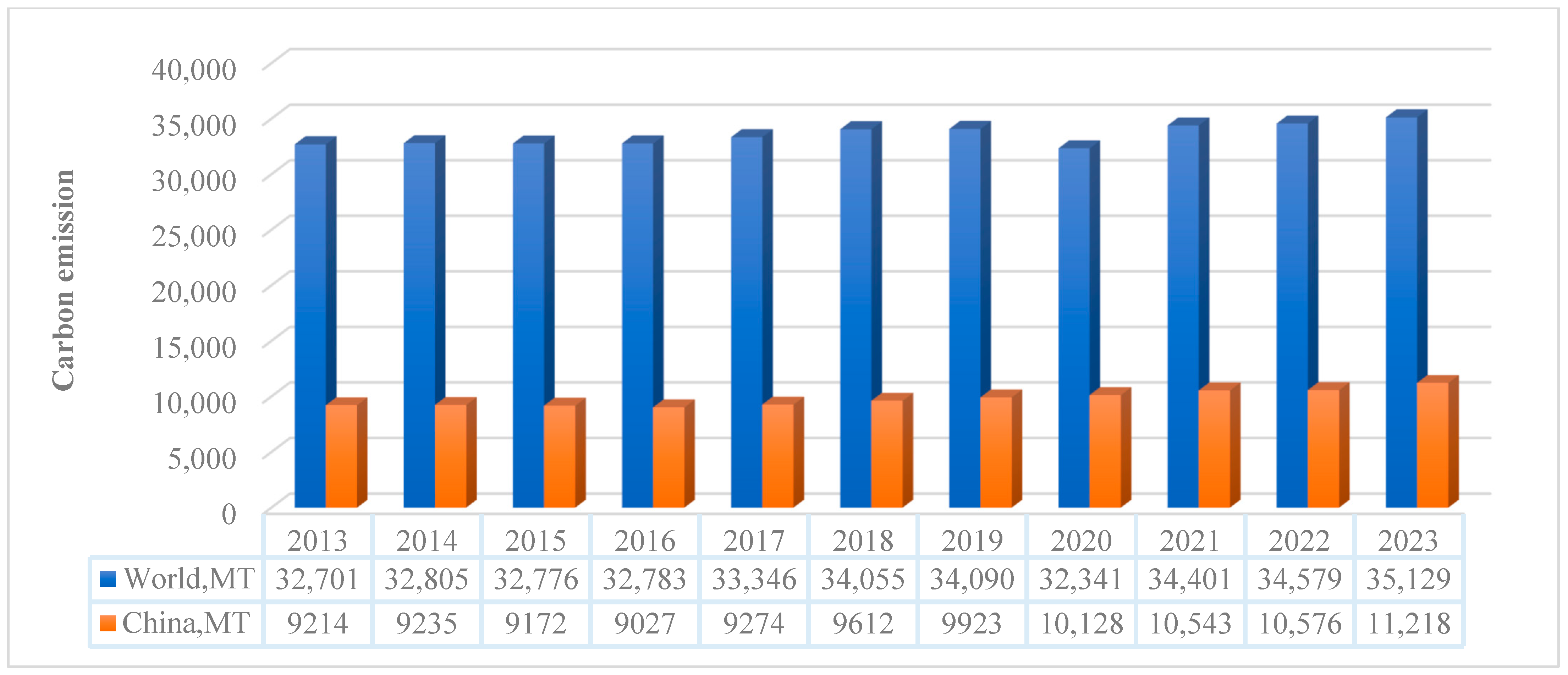

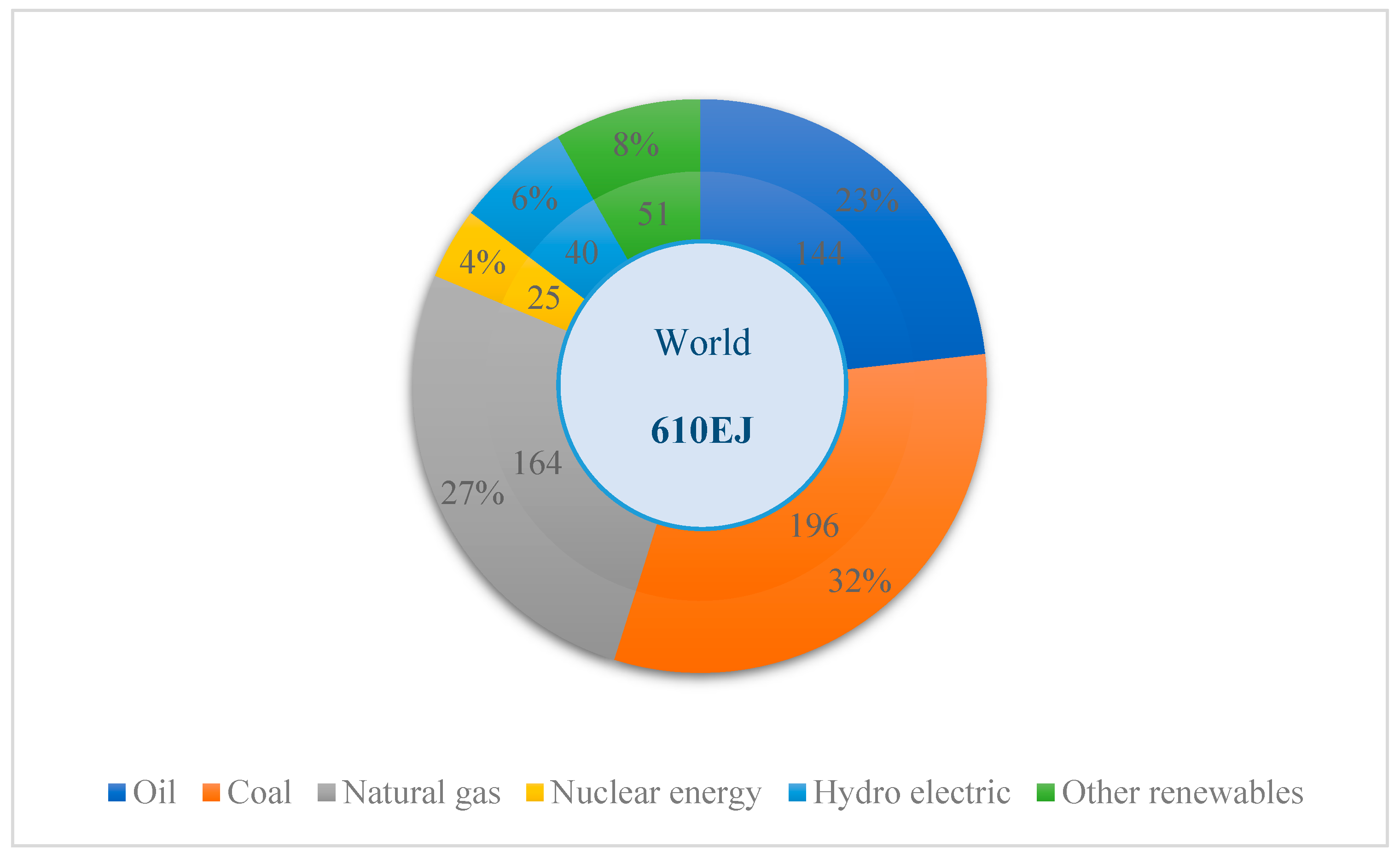
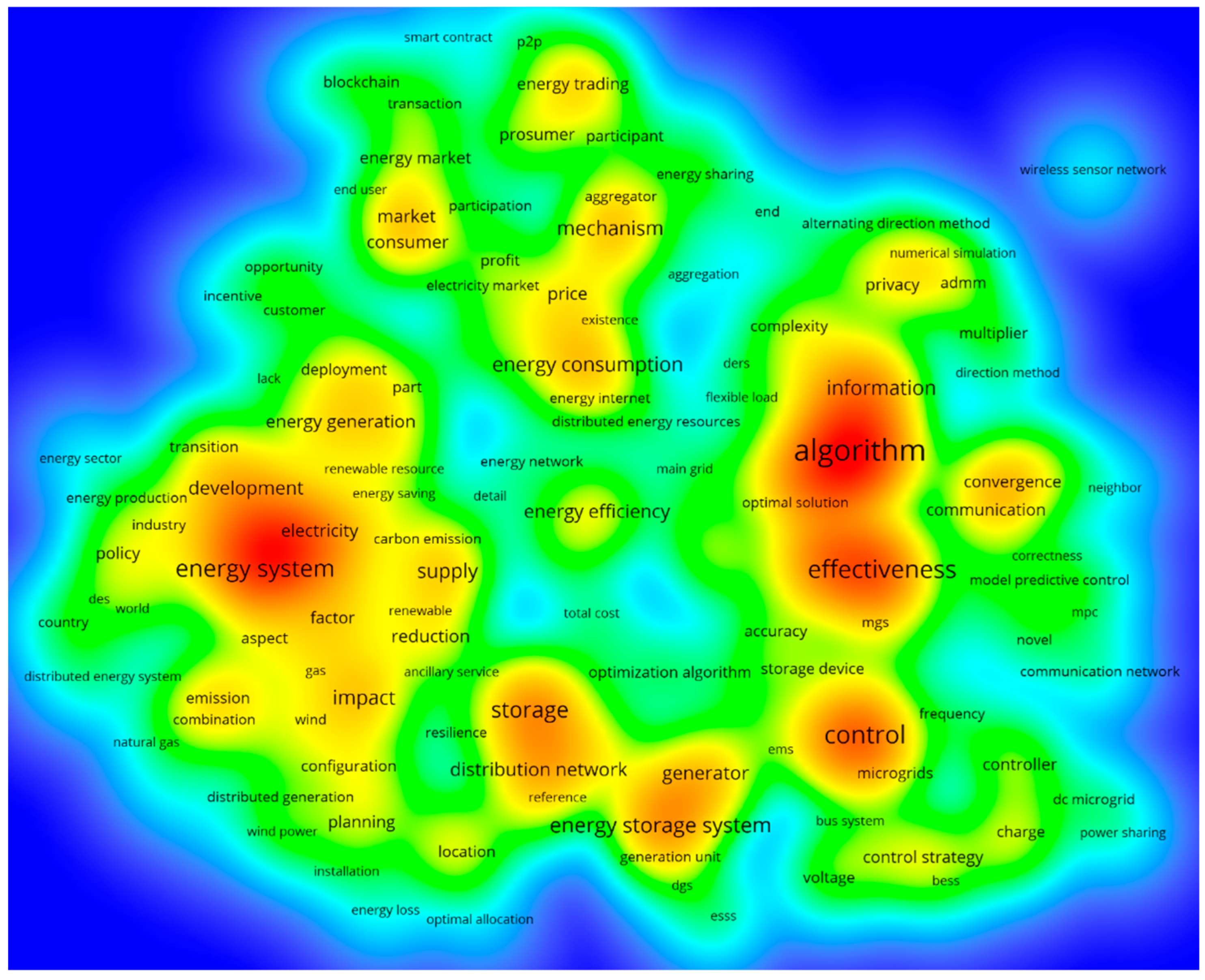


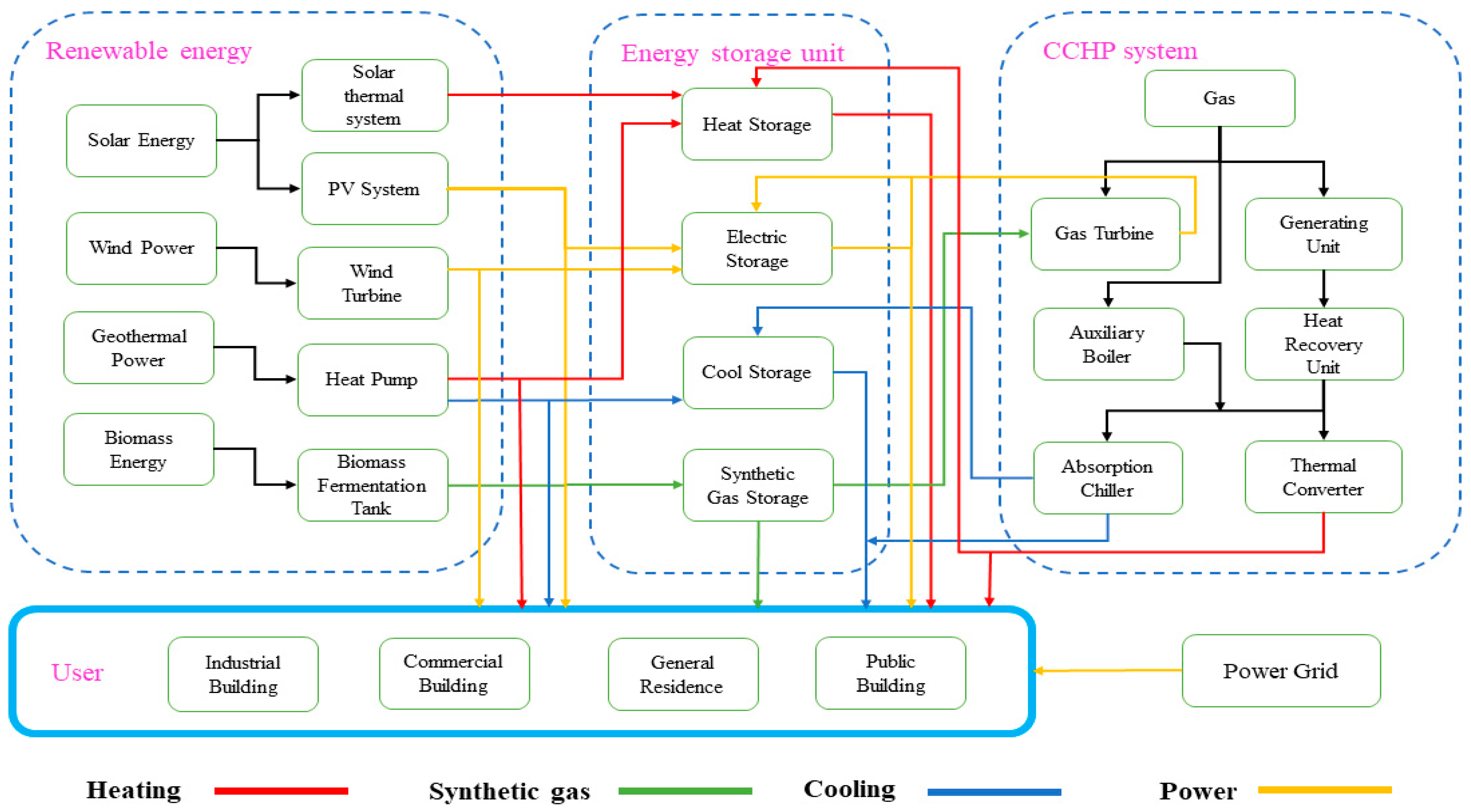
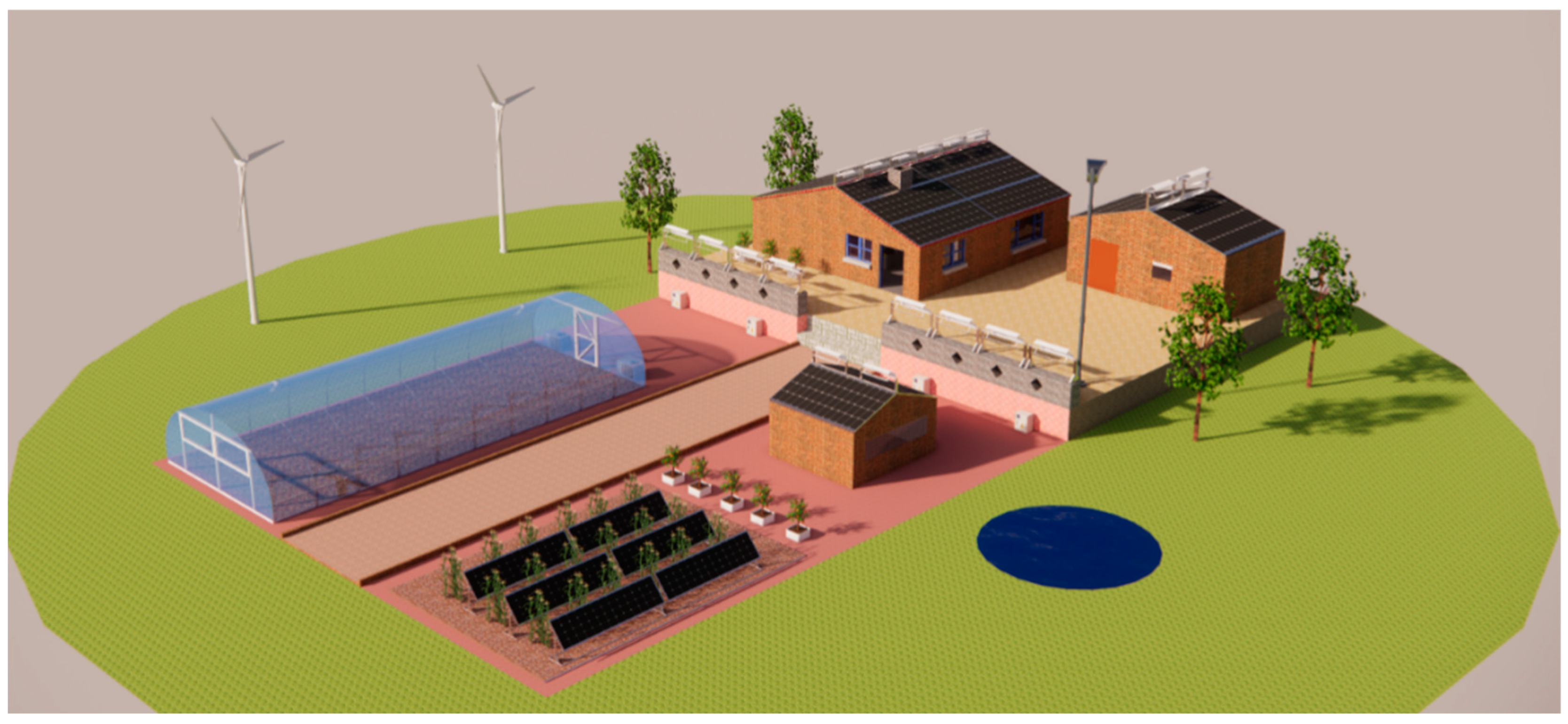
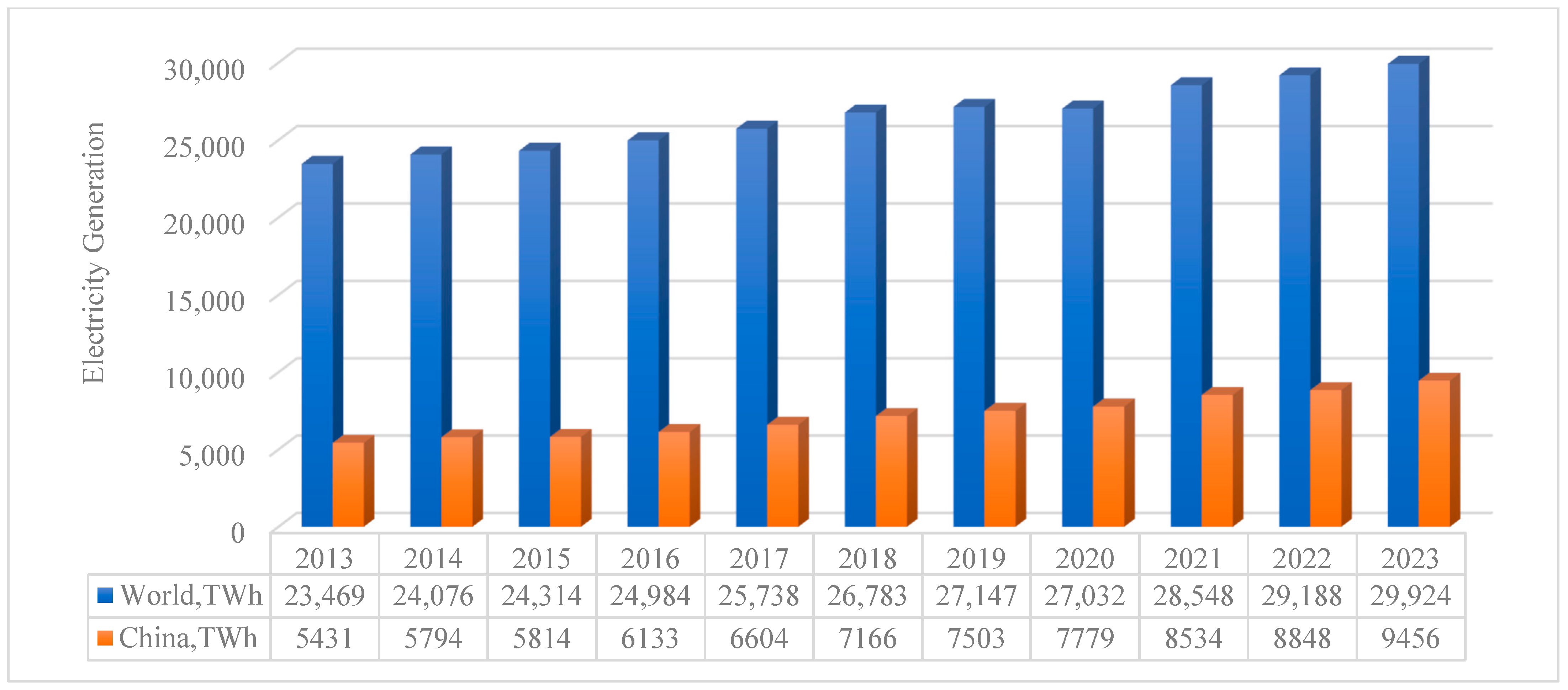

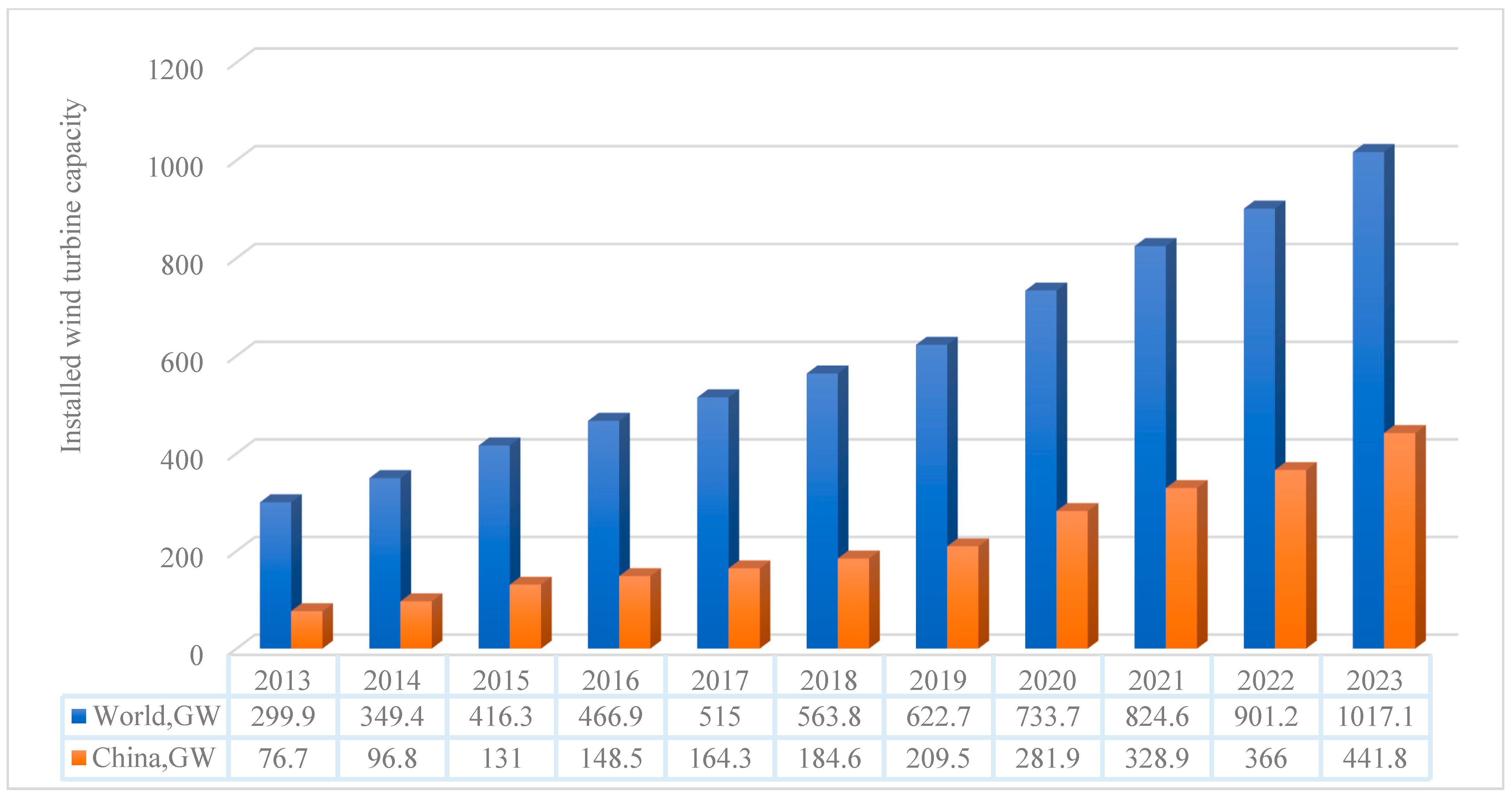
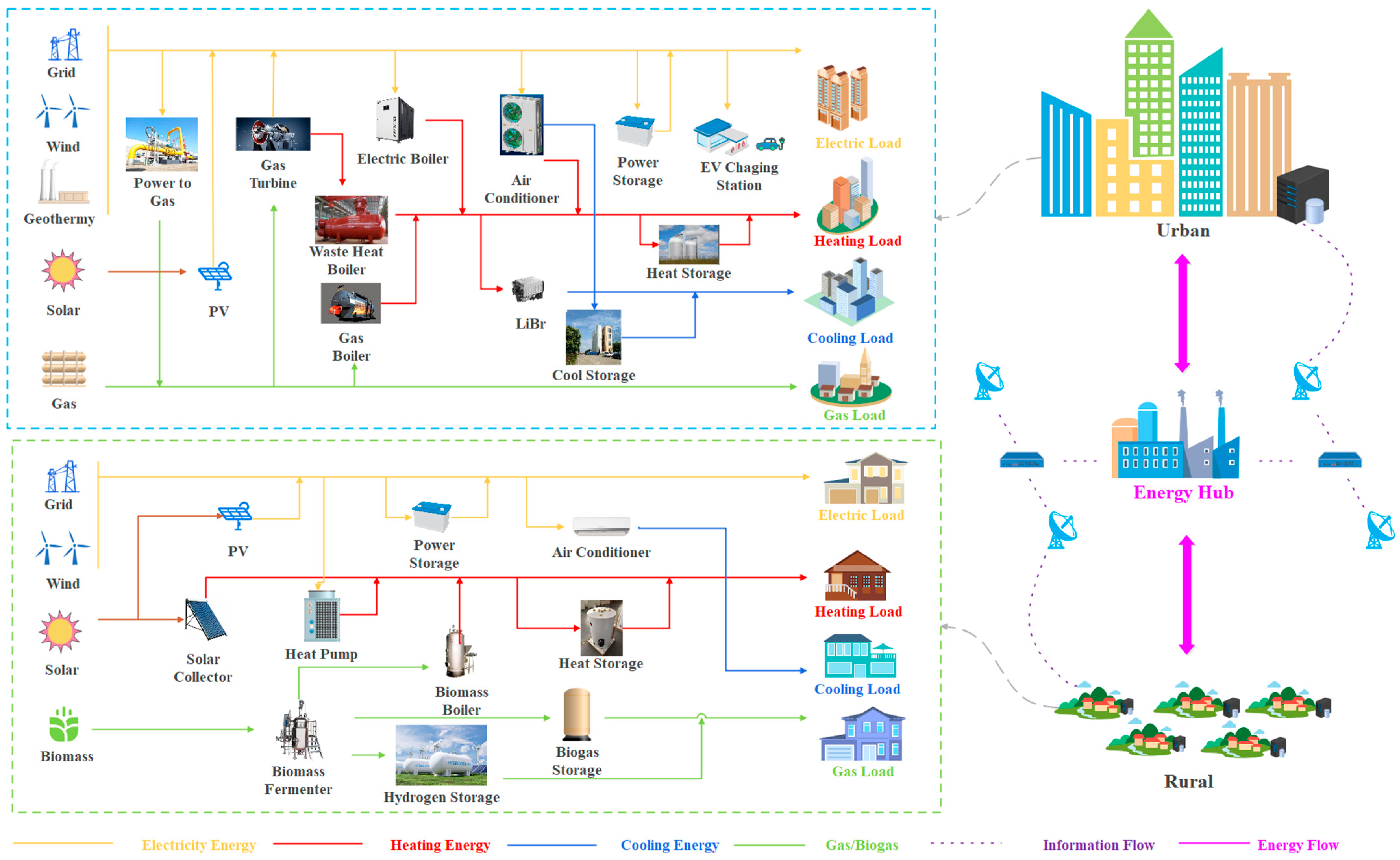
| Evaluation Object | Evaluation Purpose | System Structure |
|---|---|---|
| Campus | Energy integration [79] | Multi-energy complementary system |
| Reliability of energy supply [80] | Battery energy storage system | |
| Office building | System comprehensive evaluation [81] | Multi-energy complementary system |
| Community | Network elasticity of power system [82] | Grid |
| Flexible system for residential areas [83] | Distributed generation system | |
| Optimize microgrids for residential areas [84] | Independent microgrid | |
| System comprehensive evaluation [85] | Integrated energy system | |
| Island | Meet the electricity needs [86] | Island energy system |
| Distributed generation credible capacity [87] | Distributed generation system | |
| State grid | Assess the value of regional systems [88] | Grid |
| Industrial park | Economic benefit evaluation [89] | Power storage system |
| Determine the optimal operation strategy [90] | Integrated energy system | |
| City-level grid | Assess the reliability of the grid [91] | Grid |
| Refs. | Target | Key Point |
|---|---|---|
| [92] | Meet the energy needs of rural households | Multi-dimensional evaluation system |
| [93] | Integrating regional clean energy | Clustering regional energy systems |
| [94] | Meet the cold and hot needs of large solar areas | Low-temperature district heating |
| [95] | Distributed energy capacity planning | Economic cost minimization |
| [96] | The analysis quantifies the complementarity of multi-energy net load | Multi-objective energy model |
| [97] | Quantitative analysis of complementary effects of energy | Multi-energy net load correlation |
| [98] | Increase the penetration rate of renewable energy | Transmission loss optimization |
| [99] | Improve the efficient use of renewable energy | Game-theoretic framework Energy trading |
| [100] | Energy interaction and co-operative operation of energy stations | Joint demand response |
| Scale | Application Scenario | Main Evaluation Parameters |
|---|---|---|
| Urban | Energy market | Total cost of generating electricity [105] |
| Total costs, carbon emissions [106] | ||
| Community | Energy market | Energy pricing [107] |
| Transaction price [21] | ||
| Energy retail pricing [108] | ||
| DESs | Maximum and average economic loss [109] | |
| Rural | Distributed photovoltaic | Carbon emissions, average electricity prices [110] |
| Industrial building | Water resource recovery | Net present value [111] |
| System Scale | Application Scenario | Main Evaluation Parameters |
|---|---|---|
| Building | Energy demand balance | Consumption of heat and cold [112] |
| Building heating | Average cost of heating [113] | |
| Energy supply | Satisfaction rate [114] | |
| Community | Distributed generation | Satisfaction rate [115] |
| The optimum size [116] | ||
| Pressure drop of gas pipe network [117] | ||
| Multi-energy microgrid | Energy load dispatching [118] | |
| Industrial Park | Multi-energy microgrid | Daily energy storage, short dynamic payback period [119] |
| Region | Research Focus | Application Scenario |
|---|---|---|
| National | Analyze the Chinese present situation of the application of distributed generation and description [122] | — |
| National | Explore the application of blockchain in distributed transactions [123] | — |
| Lianyungang (City) | Optimization of distributed power generation systems [124] | Hospital |
| Eastern coastal area | Flexible management of DES power, cooling, heating, and steam energy [125] | Community |
| Northern Shandong region | Straw burning has a significant impact on the environment [126] | Rural area |
| Tianjin (City) | Align daily economic objectives with temporary demand response and environmental benefits [127] | Office building |
| North China | Evaluate the capacity expansion potential of photovoltaic systems [128] | Comprehensive energy park |
| Level | Grid Type | Load Type | DES Technology |
|---|---|---|---|
| Neighborhood level | Grid Tied | Stable | Integration of wind, photovoltaic, and biomass generation systems [131] |
| Off-Grid | Intermittent | PV system [132] | |
| Grid Tied Grid Tied Off-Grid | Intermittent Intermittent Off-grid microgrid system | A multi-energy complementary CCHP system [133] PV system and wind turbines [134] A CCHP system with a two-way connection to the grid [135] | |
| Community level | Grid Tied | Stable | Solar and biogas generator energy systems [136] |
| Grid Tied Off-Grid Grid Tied Grid Tied Grid Tied Off-Grid Grid Tied | Intermittent Stable Intermittent Stable Stable Off-grid microgrid system Stable | PV system containing energy storage [137] Hydrogen, heat, and electricity co-generation system based on solar energy [138] Regionally distributed hydrogen energy systems [139] PV system and wind turbine [140] Hybrid PV, wind, and battery system [141] Hybrid wind, solar, and battery microgrids [142] RES-CCHP-MG [143] | |
| Urban level | Grid Tied | Intermittent | CCHP with hybrid centralized energy storage [144] |
| Stable | Geothermal with ORC [145] | ||
| Intermittent | Geothermal driven CCHP [146] | ||
| Stable Stable | Low-temperature geothermal power system [147] DES-CCHP [148] |
Disclaimer/Publisher’s Note: The statements, opinions and data contained in all publications are solely those of the individual author(s) and contributor(s) and not of MDPI and/or the editor(s). MDPI and/or the editor(s) disclaim responsibility for any injury to people or property resulting from any ideas, methods, instructions or products referred to in the content. |
© 2025 by the authors. Licensee MDPI, Basel, Switzerland. This article is an open access article distributed under the terms and conditions of the Creative Commons Attribution (CC BY) license (https://creativecommons.org/licenses/by/4.0/).
Share and Cite
Cheng, Q.; Zhang, Z.; Wang, Y.; Zhang, L. A Review of Distributed Energy Systems: Technologies, Classification, and Applications. Sustainability 2025, 17, 1346. https://doi.org/10.3390/su17041346
Cheng Q, Zhang Z, Wang Y, Zhang L. A Review of Distributed Energy Systems: Technologies, Classification, and Applications. Sustainability. 2025; 17(4):1346. https://doi.org/10.3390/su17041346
Chicago/Turabian StyleCheng, Qun, Zhaonan Zhang, Yanwei Wang, and Lidong Zhang. 2025. "A Review of Distributed Energy Systems: Technologies, Classification, and Applications" Sustainability 17, no. 4: 1346. https://doi.org/10.3390/su17041346
APA StyleCheng, Q., Zhang, Z., Wang, Y., & Zhang, L. (2025). A Review of Distributed Energy Systems: Technologies, Classification, and Applications. Sustainability, 17(4), 1346. https://doi.org/10.3390/su17041346






